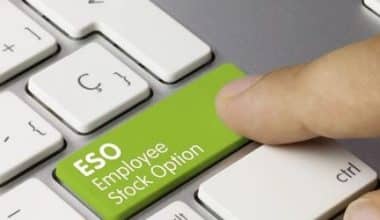What is Enterprise Risk Management (ERM) Software, and how does it work?
Enterprise risk management (ERM) is the method of identifying and assessing common and essential risks that could cause normal business processes to be delayed or canceled. Enterprise risk management software (also known as ERM software) is a form of risk management system/solution designed to assist large businesses in identifying potential risks and balancing them against business opportunities. It’s also known as Enterprise risk management information systems (RMIS). These systems basically help to combat growing technical challenges like DNS and DDoS attacks.
As a result of its wide reach, ERM is the first choice for financial analysts and project managers at;
- Banking Institutions
- healthcare Facilities
- Insurance companies
Furthermore, ERM software ensures that these companies run as safely and efficiently as possible. In other words, in identifying key risks in your business goals, you would need the risk management solutions developed by an enterprise risk management system (ERM) to avoid or plan for them.
N.B: ERM solutions should not be confused with enterprise resource planning, which is also known as enterprise resource management (ERP).
Enterprise Risk Management Software Features
The following are some prominent ERM software features you should look out for starting out.
#1. Risk analysis forecasting:
Determine the potential costs associated with different risks over the lifecycle of your company and budget for these worst-case scenarios.
#2. Predictive analytics:
Using historical and real-time data to build custom business models.
#3. Incident response management:
Create and execute plans to minimize the impact of events such as power outages, cyber-attacks, supply shortages, and so on.
#4. IT governance and cybersecurity:
This basically involves setting up stable data networks to avoid DNS and DDoS attacks.
#5. Notifications and alerts:
Receive automatic alerts for real-time project changes during danger scenarios; notify staff or customers when there are unplanned outages or service interruptions.
Auditing:
Save and analyze historical risk data from previous occurrences in order to identify new threats and future response tactics on a continuous basis.
Advantages of an Enterprise Risk Management (ERM) Software
Through enhancing a company’s risk management practices, ERM solutions should assist in the following ways
#1. Prepare for mishaps, accidents, and Cyberattacks
ERM software’s key advantage is that it protects and prepares the business for all forms of disasters. The Enterprise Risk Management system basically begins by identifying main threats that are specific to your market, operating territories, competition, and other factors.
By understanding industry-specific issues, you will enhance the management system with this customizable risk assessment. DDoS (distributed denial-of-service) attacks, for example, are targeted attempts to disrupt web services. If you run an online store, you must keep your website up and running at all times. An ERM adds to the cyber protection measures in place to protect your domain from these types of attacks.
ERM platforms provide incident management capabilities in the event that a danger materializes. If you plan out your incident management tactics ahead of time, you’ll be able to put them in place quickly when tragedy hits. You will reduce future losses by avoiding service delays. Basically, a n incident response to a technical attack on an eCommerce website can involve switching to a backup server to avoid service interruptions for customers.
#2. Enhance Business Processes
Another advantage to identifying danger is that it helps you eliminate inefficient activities that contribute to operational risk. An ERM system includes resources for identifying increasing competitive conditions in your industry may result in a decrease in consumer demand for specific goods and services.
Road construction near your warehouse, for example, could cause shipping delays. In order to prioritize outgoing shipments, you can quantify the consequences of these delays. When the construction is over, you will evaluate these risk reduction adjustments to see if they’re worth keeping in order to improve your services in the future.
#3. Prepare for Service Disruptions
Being aware of all potential risks and planning ahead of time helps you maintain customer loyalty. Customers can be notified well in advance of scheduled outages or interruptions by using automatic alerts from an ERM app.
Furthermore, you may use alerts in a variety of ways to boost your business communications. Are your shipments being held up? Send an email to your partners so they are aware of the situation ahead of time. Is there a power outage? With a push notification, you can summon the incident management team.
#4. Maintain Compliance with Changing Regulations
ERM also offers compliance monitoring as a useful tool. Regulatory bodies and policymakers around the world are constantly reforming legislation to encourage better working conditions. Basically, regulatory enforcement handled by an ERM system will help you avoid litigation, fines, and penalties. Furthermore, the governance, risk, and enforcement (GRC) program will keep track of changing laws and keep you compliant in any jurisdiction.
Information systems in the United States are covered by a six-step risk mechanism or risk management framework (RMF):
- Categorize
- Select
- Implement
- Assess
- Authorize
- Monitor
Meanwhile, an ERM will assist you in implementing these measures for your own network protection.
#5. Improve Credit and Insurance Rates
Businesses that are less risky are rewarded financially more than those that are riskier.
Unexpected supply chain disruptions, such as a worker shortage, will result in revenue being lost. Furthermore, employees who are hurt on the job are entitled to costly worker’s compensation benefits. All of these hidden dangers can easily add up. Rather than paying medical costs or losing revenue due to preventable injuries, you can use an enterprise risk management software to help plan for these scenarios and eliminate these large payments.
In addition, using an ERM solutions to measure the risks will help you save money on insurance and increase your credit score. Your company’s commitment to risk reduction practices is shown by incident management strategies.
What is the difference between ERM and Risk Management?
Both ERM and risk management solutions are designed to protect companies from risks by detecting, quantifying, and reducing risk. ERM, on the other hand, is a form of risk management software designed for larger companies in the banking, healthcare, retail, and insurance industries. For all other sectors, a general risk management approach is more suitable. A smaller healthcare facility, on the other hand, may benefit from risk management software, while a larger organization might benefit from an ERM.
There are also options for managing energy trading risk (ETRM). This form of software is designed to mitigate the risks of trading assets on financial markets.
Best Enterprise Risk Management Software
According to reviews, the following are some of the best enterprise risk management softwares out there.
#1. Optial SmartStart
With this ERM software, you can do the following;
Identify, store, and exchange risk data around the organization in a clear and methodical manner. Capture inherent, residual, and goal risk assessments, as well as other related assessment data, using automation. Create KRIs to give you a heads-up on possible changes in risk exposure. Define possible risk scenarios and record the potential effects, likelihood, and cost of a risk event.
#2. TeamMate+ Audit
TeamMate Audit is an audit management framework that assists auditors and audit department leadership in managing all facets of the audit process. It also assists organizations all over the world in identifying and evaluating risk, creating and managing audits, scheduling and allocating resources, capturing T&E, managing issue remediation, and monitoring and reporting. This is possible with the help of alerts on dashboards.
#3. CommodityPro
TechnoGen, an IT and software service provider based in India, developed CommodityPro. This is an enterprise risk management platform. The CTRM platform is primarily concerned with analyzing a broad variety of risk factors and their potential effects on business processes. Consequently, they’re gradually establishing themselves as a leading provider of commodity trading and risk management tools.
This software basically assists commodity traders in a variety of areas including contracts, financing, inventory, distribution, and trade documentation.
#4. Essential ERM
Unique risk bow tie features, risk appetite structures, and thresholds, strategy-centric risk, board monitoring module, heat maps, and more are all included in this award-winning, purpose-built enterprise risk management program. It’s simple to upgrade your ERM system.
#5. SEON. Fraud Fighters
With SEON’s fraud prevention platform, you can automatically flag fraud users or merchants with high-risk ratings. It works with real-time data enrichment, application fingerprinting, digital footprint analysis, and Whitebox Machine Learning insights to improve your company.
Also, you can set up rules unique to your company to monitor risk levels and save time on manual analysis. Order a 30-minute demo and receive a 30-day free trial!
#6. Smart IP&O
Smart IP&O, an integrated suite of native web applications for demand forecasting, inventory optimization, risk management, and supply chain analytics, is available from Smart Software. It offers a single environment that is simple to use, scale, and collaborate in, as well as a robust inventory and forecast modeling. Furthermore, since they use a “one-size-fits-all” approach, you can solve a specific set of needs at first and then add new apps as necessary without incurring additional implementation costs.
#7. GOAT Risk
GOAT is a simple, low-cost risk management software system that includes all of the resources you’ll need to effectively manage risk. Threats can be tracked, collaborated on, and reported on from anywhere in the world. Pricing that is fair and clear.
Also, it is suitable for all types and sizes of companies. Free trial for 30 days (no credit card required).
However, monthly rolling commitments start at £30 per month.
What Is an ERM Software?
ERM software is cloud-based software that identifies and monitors financial, strategic, and operational risks for enterprises. It aids in reducing the effect of risks on the earnings and operations of a firm.
What Are the 3 Types of Enterprise Risk?
ERM frequently classifies a company’s risks as operational, financial, and strategic. Strategic risks affect long-term plans, whereas operational risks affect day-to-day operations. Financial hazards affect a company’s overall financial health and standing.
What Are ERM Applications?
The Enterprise Risk Management (ERM) Application lets a company find, evaluate, quantify, manage, and keep an eye on all of its enterprise risks in one place. With the application, organizations can use role-based dashboards and reports to get real-time information about their risk management programs.
How Much Does ERM Software Cost?
Depending on which vendor you choose, the price of ERM software can vary by a lot. Some ERM software companies sell platforms for $20,000 or less, while others charge more, closer to $40,000, because they offer more premium apps and services.






